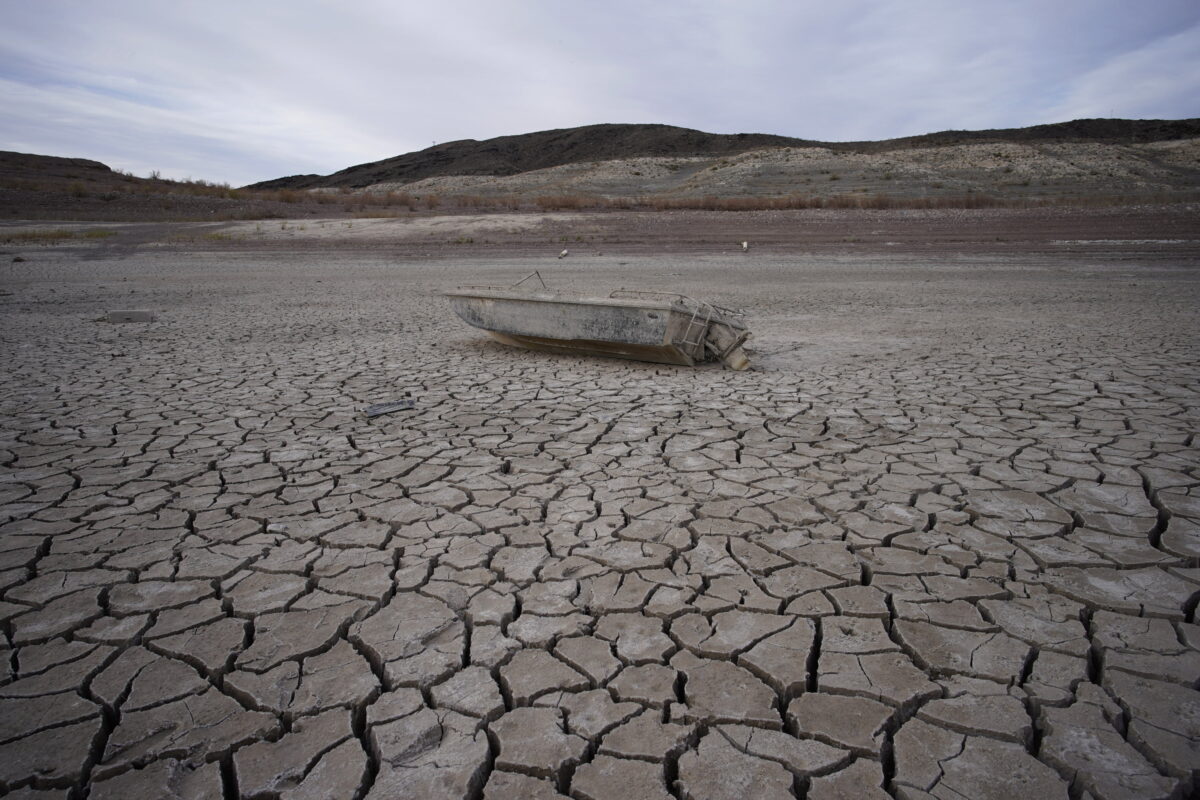Lake Mead and the Colorado River Basin are responsible for 90 percent of water for Southern Nevada and Las Vegas. They’re going dry.
Indeed, as a result of depleting water levels during the drought, the Bureau of Reclamation cut Southern Nevada’s water allocation by 7 billion gallons last January. In January 2023, it’ll cut an additional 1.1 billion gallons.

The good news, according to primary water supplier Southern Nevada Water Authority (SNWA), is that 99 percent of indoor water used in Southern Nevada is recycled, and Southern Nevada has successfully reduced its water consumption by 25 percent since 2002.
The bad news is Southern Nevada uses 60 percent of its water for outdoor purposes, and Lake Mead is still declining despite conservation efforts.
Declining Water Levels
The Colorado River Basin serves seven “Basin States.” In 1922, the states established the Colorado River Compact to release water from Lake Mead (the lower basin) and Lake Powell (the upper basin) based on storage conditions.
Per the compact, each basin gets 7.5 million acre-feet of water per year—one-acre-foot equals about 326,000 gallons—and a certain percentage goes to the Basin States based on water levels in the dams.
On Aug. 31, Lake Mead’s water level was just over 1,044 feet above sea level. That’s almost 185 feet below the 1,229 feet level when the basin is full, according to official reports, and is a drop of 176 feet since 1999.

Just over a year prior on Aug. 16, 2021, Lake Mead fell below 1,075 feet and triggered the first-ever Level 1 Shortage Condition from Reclamation. That led to the 7 billion gallons allocation reduction mentioned above, known as Level 1 water reductions.
Importantly, if Lake Mead’s water level drops to 895 feet, it’ll reach “dead pool” levels—a foreboding term that means Hoover Dam won’t be able to produce hydropower or deliver water downstream—something relied on by millions of Americans.
However, the Level 1 reductions haven’t been enough to return Lake Mead’s water level to above 1,075 feet to end Level 1 water reduction efforts. Accordingly, on Aug. 16, the federal government declared Level 2 water reductions for the Colorado River.
For Nevada, the Level 2 reductions equate to a total 2023 water allocation of 275,000 acre-feet of water—4,000 acre-feet less than 2022’s allocation.
Water Conservation
According to 2021 estimates by the U.S. Census Bureau, Nevada’s population is just over 3.144 million people, and 2.2 million residents live in the greater Las Vegas Valley. SNWA provides them with water.
SNWA states, “Nevada’s 300,000 acre-foot per year (AFY) Colorado River apportionment continues to be Southern Nevada’s largest and most critical permanent resource.”
However, in 2021, reclamation instituted reduced allocations, cutting Nevada’s 300,000 allotments.
Luckily for Nevada residents, in 2002, SNWA adopted a drought plan that implemented stepped conservation measures. Thanks to those measures, in 2021, Southern Nevada residents consumed 242,000 acre-feet of water.
Notably, SNWA states about the efforts, “Southern Nevada has been preparing for and responding to drought and climate change impacts … The community has responded proactively, aggressively, and in a sustained manner.”

As part of the above efforts, SNWA instituted seasonal water restrictions, encouraged replacing grass with “water smart landscapes,” and prohibited turf installation in new residential front yards. Plus, it encouraged customers to report water waste and instituted “incentive” pricing, billing, and landscape audit programs.
Arguably, the most effective effort undertaken by SNWA was installing an intake valve at the bottom of Lake Mead.
In fact, Nevada is the only Lower Basin state to draw water directly from Lake Mead. The others pull water downstream of Hoover Dam.
Dubbed the “third straw,” SNWA’s intake valve construction began in 2008 and was completed in 2020. It now sits at the bottom of Lake Mead at 875 feet. It started operations in April.
Consequently, even if Lake Mead reaches dead pool levels and can’t supply other states with water and power, Southern Nevada residents will still have water. Nevada could experience a drop in power, but hydroelectric power provides less than five percent the state’s total electricity net generation, according to the U.S. Energy Information Administration.
The third intake valve came online just in time. On April 25, SNWA revealed that its first intake valve, at 1,050 feet, became visible above the water line. It’s since become inoperable.

Follow
Katie covers energy and politics for The Epoch Times. Before starting her career as a journalist, Katie proudly served in the Air Force as an Airborne Operations Technician on JSTARS. She obtained her degree in Analytic Philosophy and a minor in Cognitive Studies from the University of Colorado. Katie’s writing has appeared on CNSNews.com, The Maverick Observer, The Motley Fool, First Quarter Finance, The Cheat Sheet, and Investing.com. Email her at katie.spence@epochtimes.us

